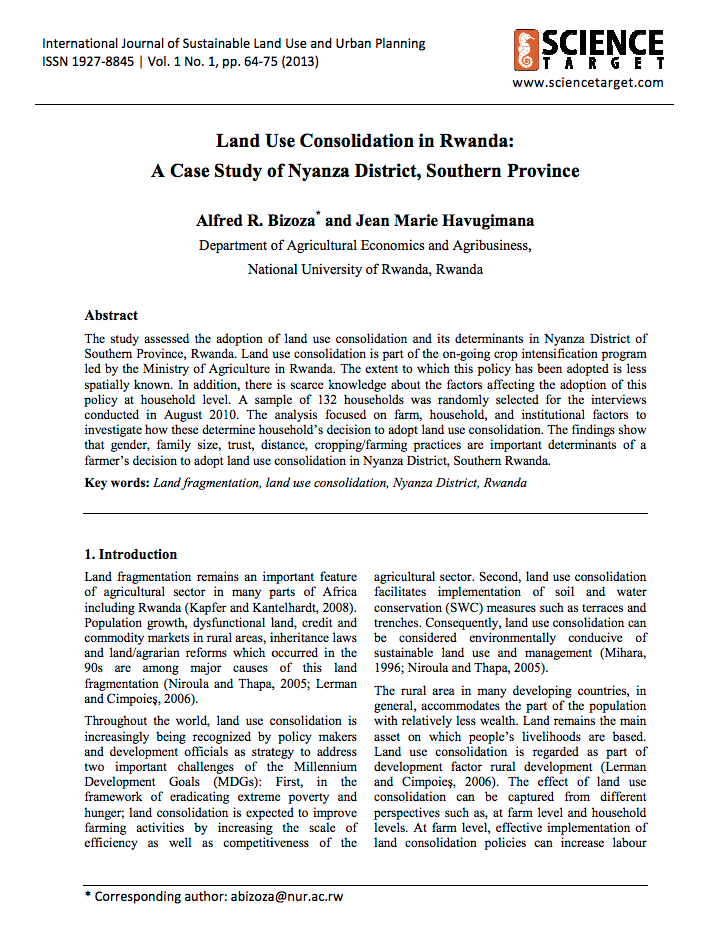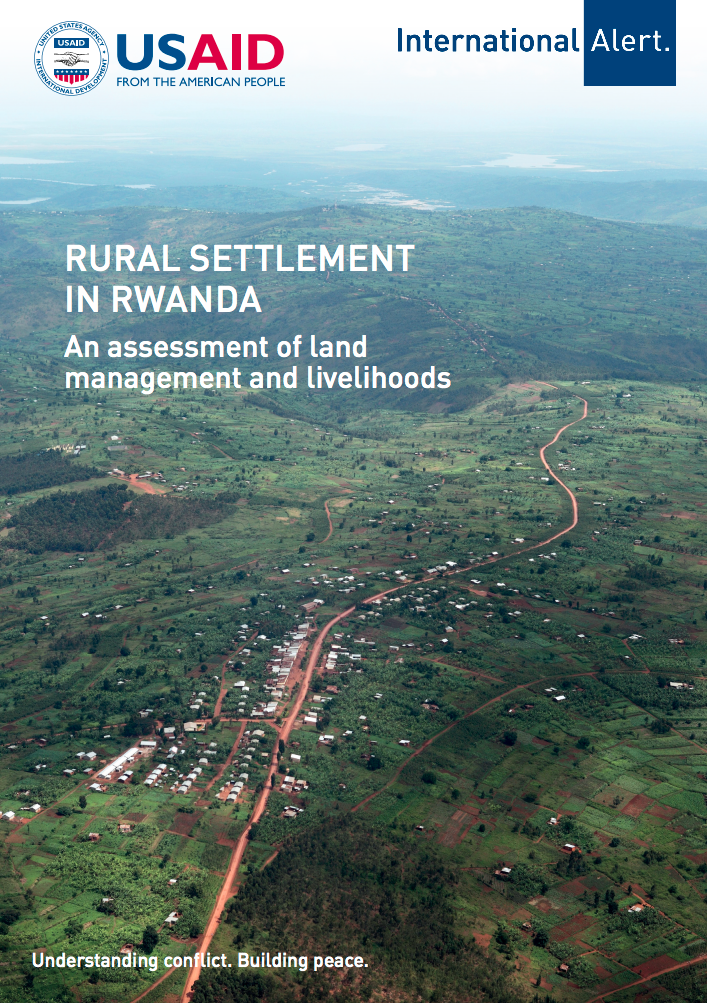Land Use consolidation A Home grown solution for food security in Rwanda
Rwanda’s economy is largely agrarian. More than 80% of the Rwanda’s projected population of 10.5 million1 depends on farming. The total land area of the country measures 24,700 square kilometers. Although about 79% of the country’s land is classified as agricultural, only 11% of the land represents permanent crop land2. The remaining agricultural lands are covered with forests, marshlands and marginal lands in the hillsides where permanent and routine cultivation of crops are not tenable.



